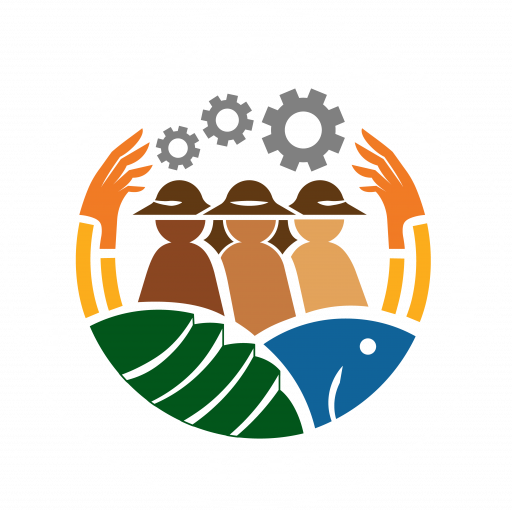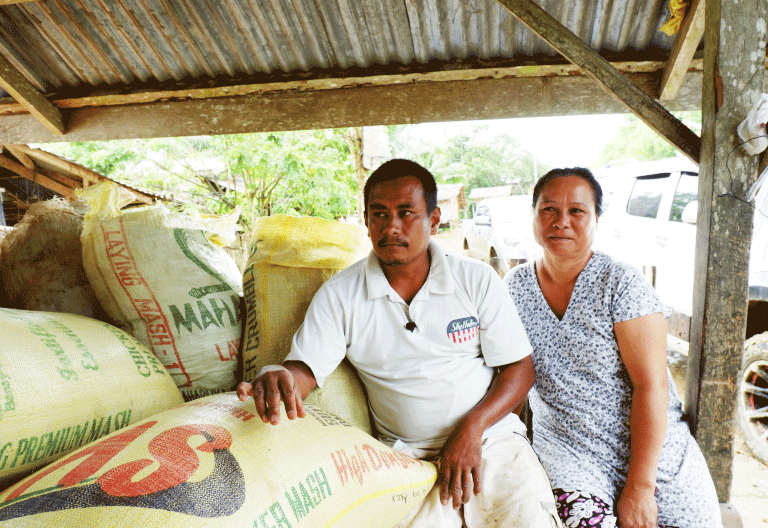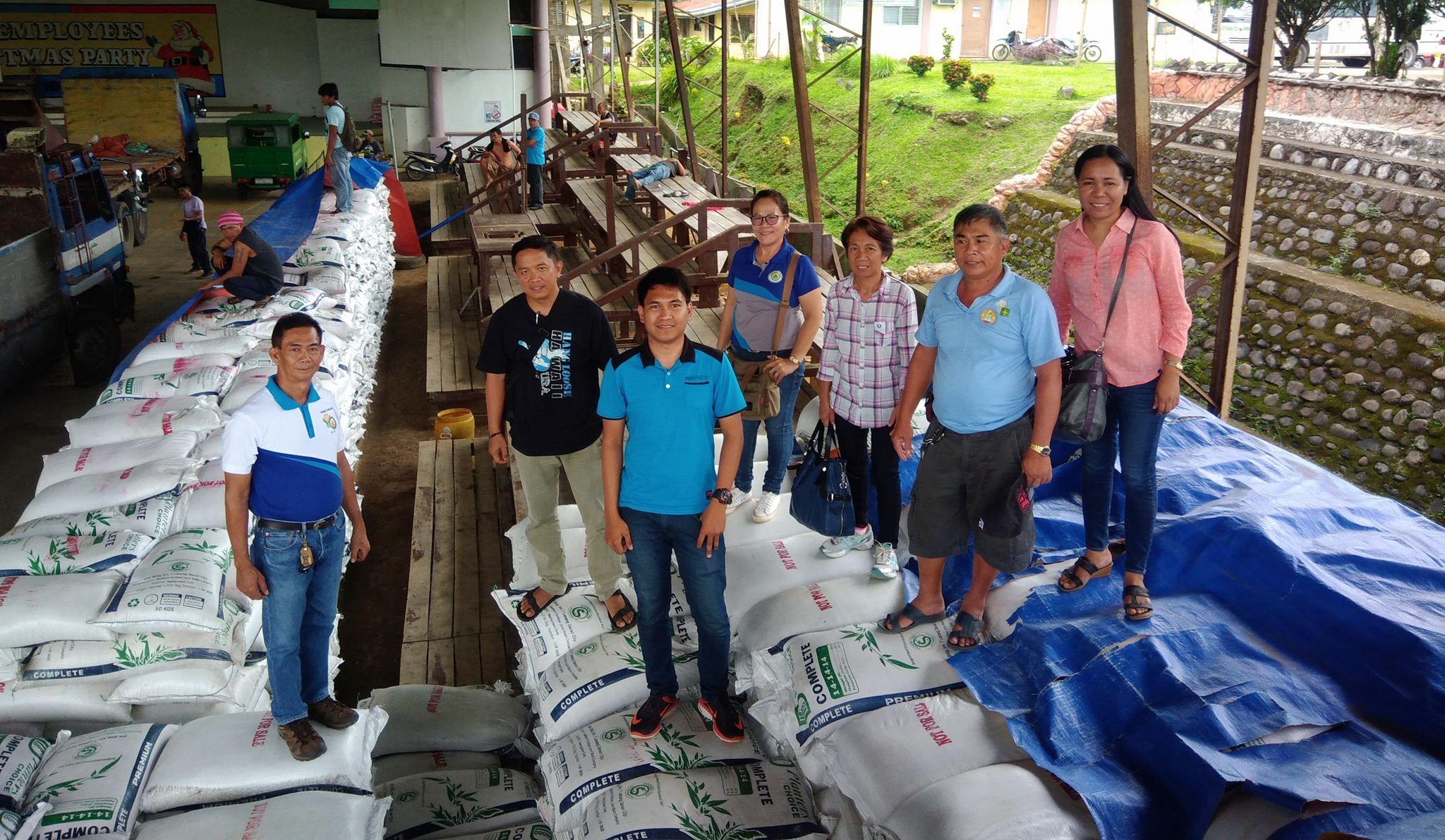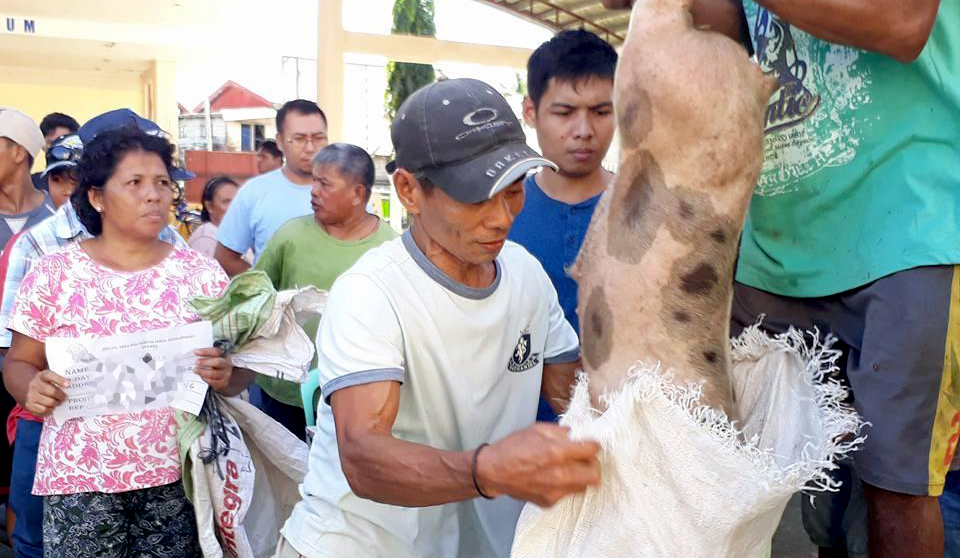
GLAN, SARANGANI — With a mission to provide food security and increase the productivity of the marginalized farmers and fisherfolks, the Special Area for Agricultural Development (SAAD) Program penetrates to the remotest areas in the country, searching far and wide to lend a hand that would help lift those in the pit of poverty out of their current situation.
Sarangani, one of the top ten priority provinces of SAAD for 2017, is among the poorest provinces in SOCCSKSARGEN or Region XII. According to its Provincial Governor Steve Chiongbian Solon, the hard-to-reach parts of Sarangani, which are upland areas, are the ones pulling the poverty incidence of the whole province up to the ceiling. The lack of access to such areas is one of the main reasons why the local government could hardly infiltrate to the locals and indigenous people in the province.
The SAAD Program’s implementation in the Sarangani province is therefore vital to those in dire need of the government’s assistance, especially in agriculture, who are often unreached by such.
In the mountainous areas of New Aklan, in Glan, Sarangani, where development could hardly stretch, there sprung a tiny community called Sitio Surang, with people coexisting with plants, trees, and animals, striving to make a living and support their families with the little amount of money they earn from farming.
Jimmy Pondivilla is one of those upland farmers who struggle to live in this far-flung area. Born in Isulan, Sultan Kudarat, the 40-year-old farmer left his hometown to live with his wife in the highlands of Sarangani in 2003. Jimmy and his wife have three children, all of whom they are sending to school in town hours away from their home. Farming is the main source of livelihood of the Pondivillas alongside raising livestock and putting up a mini sari-sari store.

Jimmy Pondivilla poses with his wife beside their harvested upland rice in Sarangani
Jimmy plants upland rice, corn, banana and cacao in their 12-hectare land. Every day, he risks his life by taking the trail they engraved on the muddy and slippery mountainside of New Aklan just to maintain their farm.
Manual farming is evident in Sitio Surang since the farmers have no access to any form of machinery. Hence, with his sickle or bagging hook, rice sacks and a vessel made from an old plastic water container, Jimmy, would manually harvest the upland rice he planted about four months ago to sell it in the market in the lowland areas as well as to his co-farmers in his community. He also used to hire farm laborers to assist him in harvesting which adds up to his expenditures.

Farmers harvesting Pondivilla’s upland rice
The months of August-September are intended for harvesting their crops. However, even with the large farmland, Jimmy admitted the money they earn is still insufficient to support their expenses. Harvesting from his upland rice and corn doesn’t necessarily guarantee him and his family a good fortune. Only when they were able to sell all their allotted harvests and save up from buying seeds to plant again and compensating the farmworkers, could they provide for their children’s needs.
Selling their harvested milled rice isn’t as easy as it sounds for before finally be able to reach the market, Jimmy had to travel the long and mud-covered roads of the mountain. Farm-to-market roads (FMRs) have not yet been established in the area, causing difficulties in transporting their produced crops. Horses are still their number one friend on their way to the marketplace. This means more days of traveling back and forth just to sell their products, not mentioning the challenges they suffer from when even a little rain pours along the way.
Aside from the long and unpaved roads, pests are their main enemies in farming upland products. These little filches eat up most of Jimmy’s crops causing a painful decrease in their earnings. Hence, pesticides are greatly needed. Post-harvest processes are also an obstacle to the absence of a well-functioning rice miller and corn sheller.
Rudy Dalama, on the other hand, is also a farmer residing in the mountains of New Aklan, Glan Sarangani. He and his wife, Minda Dalama, raised and supported their four children with their upland farming in their four (4) hectares acquired farmland, backyard farming and livestock (two pigs) raising.
However, even with a vast land, Minda and his husband only earn a net worth of P20,000 for every harvest season. This will only give them P5,000 pesos for a month, which isn’t enough to support his family’s daily needs and the schooling of his two children. Hence, to add up to their profit, Rudy is driving a habal-habal, a service motorcycle, in which he seldom earns P300-P400. Just like Jimmy, Rudy also suffers greatly from the loss in farming and the costs of marketing their upland products, which in turn makes his profit even shorter as compared with his family’s expenses.

Minda Dalama, wife of Rudy Dalama (SAAD Beneficiary) takes charge on their backyard garden and farm while her spouse is making profit out of driving a habal-habal
Jimmy Pondivilla and Rudy Dalama are just two among the chosen beneficiaries of the SAAD Program, who face the same problem in their decades of farming in Sarangani. The irony of having large farm areas yet a very low income has long been haunting the local farmers of the said province. The New Aklan Farmers Association (NAFA), where both farmers along with 123 others are members of, was selected as the recipient of the program’s agricultural intervention which aims to suffice the need of the local farmers and farmworkers in order for them to surpass the hindrances of a bountiful harvest.
Last May, NAFA received 80 kilograms of Upland Rice Seeds per farmer, which Jimmy, along with the other recipients, is now about to finish harvesting by the first week of September. About 91.28% or 398 hectares of the total land area identified for the SAAD Program (436 Has) have already been planted with Upland Rice while 70.52% or 134 hectares from the total land area for OPV White Corn (190 Has) was planted as reported last June 2017.
These are expected to be reaped on August until September of this year. In fact, just as last August 8, 2017, Jimmy already harvested a total of 50 sacks of upland rice from the SAAD Program on the 10-12% of his total farm area, each sack costs approximately P2,700. He said he will be selling 30 sacks in the market and leave the remaining 20 for his community and his family.

August 08, 2017| SAAD PPMSO distributes knapsack sprayers to the beneficiaries in New Aklan, Glan Sarangani
On the same day, the SAAD Program Provincial Program Management Support Office (PPMSO) of Sarangani, with the assistance from the Provincial Government, provided knapsack sprayers to help the farmers get rid of pests without harming their plants and lands.
Prior to the provision of agri inputs, a series of social preparation training were also done which included Farmer’s Assemblies, Production Technology training on Rice and OPV White Corn, Crop Protection, Vegetable Production and Postharvest Storage Training, Animal Healthcare Management and other farming methodologies.
These aimed to equip the farmers, particularly those who are new to having an organization like Rudy and Minda, on the proper methods of farming as well as to prepare them in managing the interventions they were about to receive.
This, according to Minda will be beneficial in protecting their lands from the damage of using inorganic fertilizers and other erroneous methods of planting. She as well shared how they could spare from paying for a separate sprayer now that they will be having their own knapsack sprayers. “This could mean a lot for us, for we will be able to save more and prevent our lands from further damages,” she said in their native language in an interview.
Aside from Upland Rice and Corn Seeds and Knapsack Sprayers, the program is about to distribute vegetable seeds, farm tools such as sickles, bolos, hand trowel and grab hoes, garden tools, fertilizers, and livestock – goat, native chicken, ducks, horses and carabaos with feeds and veterinary supplies for the beneficiaries in the municipality of Glan. These and more interventions are expected to be distributed by the third and fourth quarter of 2017 as per DA-RFO XII Executive Director Milagros C. Casis. The towns of Alabel, Malapatan, Malungon, Maasim, Kiamba and Maitum will also be receiving training and agri-interventions under a total budget of P100 million for the province of Sarangani.
Both Pondavilla and Dalama were thankful for being selected as the SAAD Program’s beneficiaries as well as for the effort of the government to reach out to farmers like them who are living in distant areas. With the assistance they have received, both are confident that they will be having more profit and enough food to leave on their plates.
Sarangani Gov. Solon likewise expressed his gratitude for the SAAD Program implementation in his beloved province. He also commended the effort of DA in improving the upland rice industry in Sarangani. “We would like to say thank you to the Dept of Agriculture – Sec Piñol, salamat po na binigyan niyo kami ng chance to prove ourselves that we can make this project happen,” said Solon in an interview.
Meanwhile, the Provincial Government of Sarangani and the Department of Agriculture Regional Field Office (DA-RFO) XII are now preparing for the SAAD Program’s harvest festival in the province to be held in September. With this, beneficiary farmers like Jimmy and Rudy from Barangay New Aklan in Glan are expected to attend and sell their harvests fresh from their upland farms to the public.
Details on the mentioned festival will be posted on the SAAD Program’s official website and Facebook page. ###
Writer: Jhomai Canlas



